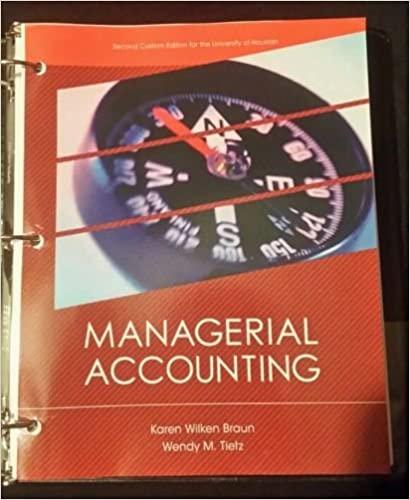
Equilibrium in financial markets: Arrow securities 1. Consider an economy extending over two periods, t = 0,1 under uncertainty. There are two, equally probably states of nature in the second period, denoted by s = 1,2. There are two individuals in the economy, denoted by h = 1,2. Suppose there is one consumption good in the first period but two consumption goods in the second. The individuals have equal preferences given by: x + E(In x 1 + In 2:2), where a denotes individual h's consumption in the first period and the denotes h's consumption in state s = 1, 2 of commodity c=1,2. The first and second individual have 5 and 10 units of the good in the first period, respectively (i.e., en = 5 and ea = 10). In the first state, individual 1 has 10 units of the first good and 20 units of the second, while he has nothing in the second state. The endowment of the second individual is of 20 units of the first and second commodity in the second state, but nothing in the first state. Summarizing: the endowment of the first individual is given by (1,1,1,2,2,1,2,2 = 5, 10, 20,0,0) and for the second individual this is given by (3,2,1,1,2,2,1,3,2 = 10,0,0,20,20) A full set of Arrow securities is traded in the financial market. Let y the demand of agent h for asset a. In order to simplify notation, normalize the price of the first good in each period and state, i.e., let po = 1 the price of con- sumption in the first period and P1,1 = P2,1 = 1 the prices of the consumption of the first good in each state. (a) Find the equilibrium of this simple economy (show your computations). (b) What can you conclude about the the welfare properties of the equilibrium allocation with complete financial markets? Is full insurance possible in this economy? If yes, why? If now, why not? (c) How much wealth the first agent wants to bring into or out of the two states? Describe how he can attain that. (d) Which information do commodity prices convey? (e) Which information Arrow security prices convey? Why do the two secu- rities have a different price? Equilibrium in financial markets: Arrow securities 1. Consider an economy extending over two periods, t = 0,1 under uncertainty. There are two, equally probably states of nature in the second period, denoted by s = 1,2. There are two individuals in the economy, denoted by h = 1,2. Suppose there is one consumption good in the first period but two consumption goods in the second. The individuals have equal preferences given by: x + E(In x 1 + In 2:2), where a denotes individual h's consumption in the first period and the denotes h's consumption in state s = 1, 2 of commodity c=1,2. The first and second individual have 5 and 10 units of the good in the first period, respectively (i.e., en = 5 and ea = 10). In the first state, individual 1 has 10 units of the first good and 20 units of the second, while he has nothing in the second state. The endowment of the second individual is of 20 units of the first and second commodity in the second state, but nothing in the first state. Summarizing: the endowment of the first individual is given by (1,1,1,2,2,1,2,2 = 5, 10, 20,0,0) and for the second individual this is given by (3,2,1,1,2,2,1,3,2 = 10,0,0,20,20) A full set of Arrow securities is traded in the financial market. Let y the demand of agent h for asset a. In order to simplify notation, normalize the price of the first good in each period and state, i.e., let po = 1 the price of con- sumption in the first period and P1,1 = P2,1 = 1 the prices of the consumption of the first good in each state. (a) Find the equilibrium of this simple economy (show your computations). (b) What can you conclude about the the welfare properties of the equilibrium allocation with complete financial markets? Is full insurance possible in this economy? If yes, why? If now, why not? (c) How much wealth the first agent wants to bring into or out of the two states? Describe how he can attain that. (d) Which information do commodity prices convey? (e) Which information Arrow security prices convey? Why do the two secu- rities have a different price







